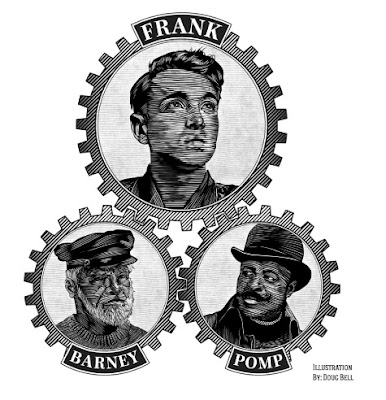Luis Senarens, the Cuban American Jules Verne, keeps amazing me. Not only has he turned out to be a Latinoid pioneer of both science fiction and pulp fiction, but he introduced interesting ideas that were ahead of his time and were not what you’d expect from well over a century in the past. His Frank Reade Jr. Exploring Mexico in His New Air-Ship had me thinking about strange variations on steampunk.
So, when I saw that he had a book called Fighting the Slave Hunters; Or, Frank Reade Junior in Central Africa, I had to get it. And I was not disappointed.
It begins with a man named Van Dyke showing up in Readerstown, “No prettier town in all America,” where Frank Reade Jr. has workshops where he manufactures his inventions. Van Dyke tells the inventor that slavers are capturing a tribe in Central Africa and asks for help in ending their plight.
Frank, as always, brimming over with idealism, agrees to do it, bringing along Vendetta, an armored land vehicle that bristles with weaponry.
Could this be a prototype for Afrofuturism? We’ll, not quite, after all it was written in 1903 . . .
When they arrive in Africa, they have to use electric weapons against the M’bokis, “a fierce and warlike set who are hand in glove with the villainous Portuguese.” Rather like the cannibals Dr. Belsidus faces in George S. Schuyler’s Black Empire. (Holy synchronicity! It’s about to be reprinted! Get it! It’s a real synapse scorcher!)
However, they are not the people who Van Dyke wants to rescue. That would be the Mamboulis, who have “attained a point nearer to civilization than any other African tribe.” And are “far from being black. Indeed, their skin is almost as white as my own . . .”
Yes, we have here one of those mythical, light-skinned African tribes that were common in the works of H. Rider Haggard, Edgar Rice Burroughs, and a lot of other adventure fiction. They can also be found in movies made as late as the 1950s. The reason for this melanin adjustment is probably similar to why Senarens wrote these stories under the pseudonym “NONAME.”
If this all wasn’t enough, they come across a new colony that are menaced by the M’Bokis. They are Irish. Their “New Erin” is described as an “Irish utopia.” Africa is seen as the Dark Continent, an unused, undeveloped void open to colonization.
When Frank’s Irish sidekick kids Pomp, his black counterpart, about what Africans would think about all these Irish crowding them out, the black man shoots back with: “All the educated culuhed people gwine stay back in the United States. We jus’ leaves our cast-off things fo’ de Irish people.”
You’d think Pomp and Barney would have more to say about the situation, but the publisher–and the readers–were more interested in an epic battle between the slavers’ armada of pirate ships and Vendetta’s electric and pneumatic guns.
Barney does admit in the end, “I jes’ likes Africky, I does!”
And I can’t help but wonder, how the New Erinites, the M’bokis, the Mamboulis, and the descendants of the slavers would have gotten along over the next few generations. What kind of Central Africa would develop? What brave new worldbuidling . . .

















No comments:
Post a Comment